
All categories
Featured selections
Trade Assurance
Buyer Central
Help Center
Get the app
Become a supplier

(1177 products available)















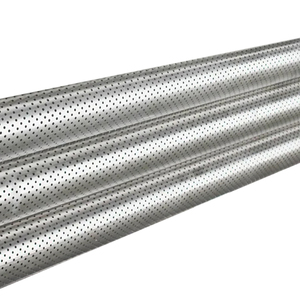


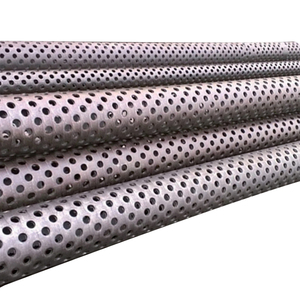


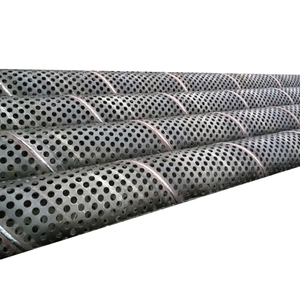



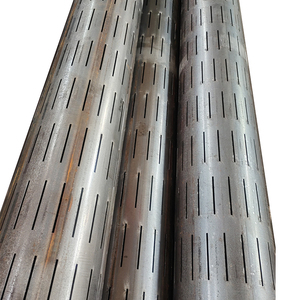
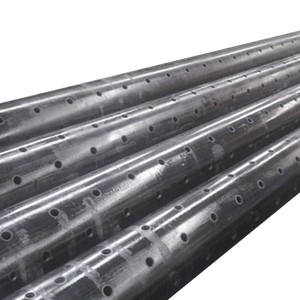




A casing swage is a kind of downhole tool with a flared casing at the top, an unaltered part at the bottom, and an internal bore. It is used to modify the downhole tubular cross-section or to upend the surrounding rock or formation. When pressure is applied, the casing swage reshapes the rock or formation into a specific shape, thus changing the internal diameter of the bore. Based on its configuration and the operations it supports, there are different kinds of casing swages.
Both upsetting and flattening swages have a similar configuration. They consist of a straight section and a tapered section, which is also called a swaged section.
Depending on the material used, casing swages can be classified into metallic and non-metallic types. The metallic ones are the more popular choices due to their durability and suitability for varied operations. They can, in turn, be further classified according to the material used for casing swage into carbon steel, alloy steel, and stainless steel. Carbon steel generally has a higher carbon content and is widely applicable in low to medium-pressure areas. Alloy steel is more suitable in areas needing high tensile strength and resistance to temperature variations. Stainless steel offers resistance to corrosion.
Non-metal casing swages are made from ceramic, plastic, or composites. These are used in specific areas of the oil field industry where non-corrosive, lightweight, or non-magnetic materials are required.
Casing swages come in a diversifying array of specifications to meet the changing needs of the casing and well industry. Customizable features on swages include factors like diameter, length, material, pressure rating, connection type, and temperature rating. Let's explore these specifications in more detail.
Size and Diameter:
Casing swages have outer diameters (OD) that range from 1.00" to 13" and inner diameters (ID) that range from 0.50" to 12". They also have lengths that range from 1 foot to 30 feet. Depending on the casing size required in a well, these tools can reduce, increase, or maintain constant casing diameter.
Material:
Industry standards API and ISO require that swages have strong and durable materials. This metal can withstand pressures, temperatures, and stresses when it is in use. Because of this, most swages are made from high-strength alloy steel, corrosion-resistant stainless steel, or carbon steel. Casing engineers can also get swage tools made from special materials like titanium, inconel, or hastelloy.
Pressure Rating:
A measuring system with bar, pounds per square inch (PSI), or kilopascals (KPA) establishes swages' pressure ratings. The swage at the head has a maximum pressure rating, which means it can tolerate internal stresses without cracking or leaking. The pressure strength depends on the swage material, design, and manufacturing process. Casing providers can recommend the correct pressure rating according to the specific application. Casing engineers can also do this safely for the fluid's temperature and pressure.
Connection Type:
There are various ways of connecting and disconnecting casing swages from other casing components. Some of them are threaded connections, flanged connections, welded connections, and rotated latch connections. The connection mechanism has to be strong enough to stop any fluid leakage.
Temperature Rating:
Casing swages should be able to withstand high or low temperatures without degrading or malfunctioning. They also shouldn't react with or corrode fluid in the well. The temperature tolerance range of swages is from the very low to the very high, which is anywhere from -60°C to 200 °C ( -76 °F to 392 °F.)
To maintain the API downhole casing swages, casing engineers must inspect the swages periodically and look for wear, corrosion, and damage. When used, clean the swages inside and outside to remove any deposits or obstructions. Store the swages upright and in a dry environment to stop any oxidation of the steel or rust. Furthermore, follow the manufacturer's correct usage methods and suggestions to avoid premature tool failure. Maintaining swages prolongs their working lives and prevents casing failure.
Casing swages are commonly applied in oil and gas industries, as well as metal swages for different material pipes. The application of casing swages primarily includes but is not limited to the following:
Reducing casing diameter:
Casing swages are primarily utilized to reduce the casing diameter and subsequently enable the installation of downhole pumps and other equipment.
Once the well has been drilled, a casing swage may subsequently be utilized to alter the size of the casing in order to permit the installation of a downhole pump or other equipment. In order to accommodate the pump in the downhole section of the well, it may be necessary to reduce the diameter of the casing.
Production operations:
In production operations, casing swages can be used to retrieve downhole tools and equipment through milling or performing operations using a casing swage.
Casing swages are also utilized during production operations to retrieve downhole tools and equipment by means of milling or performing operations with the aid of a casing swage.
Installing packers and plugs:
In addition to this, casing swages are also employed to install packers and plugs within the wellbore. By reducing the size of the casing, packers, and plugs can be securely positioned to serve their intended functions, such as providing seals or controlling fluid flow within the well.
Moreover, casing swages are employed to install packers and plugs within the wellbore after reducing the size of the casing. This allows packers and plugs to be securely positioned, fulfilling their functions of providing seals or controlling fluid flow within the well.
Diameter reduction for completion equipment:
Casing swages are also used to reduce the diameter of the casing to facilitate the installation of completion equipment and production tubing.
Furthermore, casing swages are employed to reduce the diameter of the casing. This procedure facilitates the installation of completion equipment and production tubing.
For business buyers of casing swages, there are some key points to take into consideration before ordering the products.
Application
Ensure the casing swage is compatible with different downhole tools and can tackle the intended tasks. Select casing swages designed for certain formations, holes, and materials to achieve efficient and successful operations.
Quality
Opt for a reputable manufacturer who provides casing swages with anti-abrasive, anti-corrosive, high-strength, and durable materials. A durable and reliable casing swage can reduce the expense of frequent replacements and repairs.
Cost-Efficiency
Select casing swages that don't compromise quality despite low prices. A cost-efficient swage can cut the hiring expenditure in downhole operations.
Variety
Consider suppliers who provide a range of casing swages with different specifications. This is helpful, as business buyers need to customize products to meet the distinct requirements of various projects or clients.
Technical Support
Choose a supplier that can offer business buyers technical guidance and support. In this way, business buyers can have a reliable partner to solve problems during operation, and good after-sales services can ensure buyer satisfaction and brand loyalty.
Q1: How does a casing swage work?
A1: The casing swage works by reducing the size of a particular object or reshaping it in a certain desirable form. The swage is run down in a specific casing to make the diameter smaller.
Q2: What are swage plates?
A2: Swage plates are flat pieces of steel that are primarily used to reshape or reduce the size of different objects by using a metal swaging machine.
Q3: What is a casing plug?
A3: A casing plug is a plug used to isolate or seal a particular wellbore casing formation.
Q4: What is a casing string?
A4: The casing string is a series of pipes that are placed into a drilled wellbore. The purpose of the casing string is to ensure that the well will remain open and to provide support to the surrounding soil.